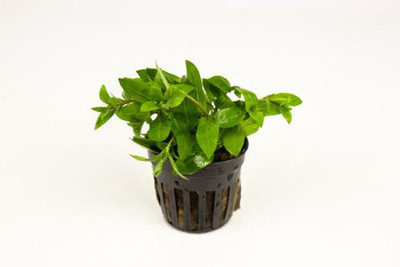Staurogyne Repens: A Comprehensive Guide to Care, Cultivation, and Aquascaping
Posted by Max Gandara on on 18th Apr 2024
Staurogyne Repens: A Comprehensive Guide to Care, Cultivation, and Aquascaping
Staurogyne Repens, often abbreviated as S. Repens, is a popular and versatile aquatic plant cherished by aquarists and hobbyists alike. Originating from South America, particularly Brazil, this species has gained widespread recognition for its vibrant green foliage, ease of care, and suitability for aquascaping. In this comprehensive guide, we delve into the various aspects of Staurogyne Repens, from its taxonomy and natural habitat to its cultivation, propagation, and maintenance in aquariums.
Taxonomy and Natural Habitat: Belonging to the family Acanthaceae, Staurogyne Repens is a perennial herbaceous plant characterized by its creeping growth habit and distinctive lanceolate leaves. In its native habitat, which includes regions of Brazil and other South American countries, S. Repens thrives in moist, marshy areas, often found along the banks of rivers, streams, and ponds. It is an adaptable species capable of surviving in both submerged and emersed conditions, making it suitable for cultivation in various aquatic environments.
Physical Characteristics: The leaves of Staurogyne Repens are arranged oppositely along the stem, forming dense clusters of foliage. Each leaf is typically lanceolate or ovate in shape, with a glossy texture and prominent veins running along its surface. Under optimal conditions, S. Repens exhibits a vibrant green coloration, enhancing the aesthetic appeal of aquariums and aquascapes. Additionally, this plant may produce small, white flowers in its emersed form, although flowering is relatively rare in aquarium settings.
Cultivation and Propagation: Staurogyne Repens is renowned for its ease of cultivation, making it suitable for both novice and experienced aquarists. When establishing S. Repens in an aquarium, it is essential to provide adequate lighting, nutrient supplementation, and CO2 injection to promote healthy growth. This plant thrives in nutrient-rich substrates, such as aquasoils or nutrient-enriched gravel, which facilitate root development and nutrient uptake.
Propagation of Staurogyne Repens can be achieved through several methods, including stem cuttings and runners. To propagate S. Repens via stem cuttings, simply trim a healthy portion of the stem and replant it into the substrate, ensuring that at least a few leaf nodes are submerged. Alternatively, runners produced by mature plants can be carefully separated and replanted to establish new growth.
Maintenance and Care: Maintaining optimal conditions is crucial for the health and vitality of Staurogyne Repens. Regular pruning helps to prevent overcrowding and encourages lateral growth, resulting in a dense carpet-like appearance. Additionally, routine water changes and nutrient supplementation are essential for sustaining vigorous growth and preventing nutrient deficiencies.
In terms of water parameters, S. Repens thrives in slightly acidic to neutral conditions with moderate water hardness. The ideal temperature range for this species is typically between 22°C to 28°C (72°F to 82°F), although it can tolerate slightly cooler or warmer temperatures within reasonable limits.
Aquascaping Applications: Staurogyne Repens is prized by aquascapers for its versatility and aesthetic appeal. Its low-growing, carpet-forming habit makes it an excellent choice for creating lush foregrounds or accentuating hardscape features in planted aquariums. When combined with other complementary plant species and decorative elements, such as driftwood or rocks, S. Repens can contribute to stunning aquascapes that mimic natural aquatic environments.
In summary, Staurogyne Repens stands out as a popular and adaptable aquatic plant suitable for a wide range of aquascaping projects. With its lush green foliage, ease of cultivation, and versatile applications, S. Repens continues to captivate the imaginations of aquarists around the world. By understanding its requirements and implementing proper care practices, hobbyists can enjoy the beauty and benefits of this remarkable species in their aquariums for years to come.

